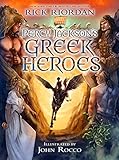Celebrate Pi Day: It Is As Easy As 3.14!
Language
Reading Level
Listen to Article
Alignment

A holiday honoring a math constant may not seem very exciting. But pi ("π") Day, observed annually in the US on March 14 (3/14), is an exception. The celebrations usually begin with activities centered around pi — the ratio of the circumference of a circle to its diameter — widely recognized as 3.14. However, they usually end with a slice or two of delicious pie.
The fun tradition began at San Francisco's Exploratorium Museum. On March 14, 1988, physicist Larry Shaw convinced his colleagues to celebrate pi by walking around one of the museum's circular spaces and eating fruit pies. The group had such a good time that museum officials turned Pi Day into an annual celebration. Visitors enjoyed pi-related activities and ate savory pies. As news of the fun event spread, schools, libraries, and universities around the US also began to observe Pi Day. In 2009, the US Congress designated March 14 as National Pi Day.
Today, Pi Day is observed in many creative ways. The Massachusetts Institute of Technology (MIT) uses the day to send acceptance letters to prospective students. However, the notifications are sent out at 6:28 PM instead of 3:14 PM EST. The number, which is double the value of pi, is called Tau. It is believed to be much more reliable than pi and has even its own celebration on June 28.
Every Pi Day, female television meteorologists around the country dress in purple. The "Dress for STEM" movement aims to encourage more girls to consider careers in science, technology, engineering, and math.
March 14 also happens to be Albert Einstein's birthday. The day holds a special significance for Princeton, New Jersey. This is where the renowned scientist spent the last two decades of his life. The city celebrates the two special occasions with an "irrational" number of events. They include pie-eating, pi-recitation, and Einstein look-alike contests.

Pi Day celebrations are relatively new. But the numerical constant has been known to humanity for thousands of years. The Babylonians used it 4,000 years ago to determine the area of a circle. They gave pi a value of 3. The ancient Egyptians came closer to the actual number in 1650 BC. They estimated pi to be 3.165. Archimedes of Syracuse (287-212 BC) was the first to calculate the constant mathematically. He gave pi a range of between 3 1/7 and 3 10/71. Given that the numbers were all derived without any help from computers, their proximity to the true value of pi is truly impressive!
Happy Pi(e) Day!
Resources: Exploratorium.edu, wikipedia.org, Princeton.edu

Get the Workbook for this article!
Workbook contains: Article, Reading Comprehension, Critical Thinking Questions, Vocabulary in Context (+ answers), Multiple Choice Quiz (+ answers), Parts of Speech Quiz (+ answers), Vocabulary Game (+ answers)Cite Article
Learn Keywords in this Article
34 Comments
- restarted8 monthsI only know 3.14. Instead of recess we had some math game but happy pi day!
- winifredlishus8 monthsPI DAY (I like pie better tho)
- dzavala2_328 monthspie is cool
- ejf138 monthsHow much of Pi can you recite? The best I can go is 3.14159265358.
- warrior_wolf3618 monthsAll I can do is 3.14 Lol
- masos8 monthspie is cool
- sophiaak8 monthsPIEEEEEi love pie but NOT pumpkin pie only chocolate or banana pie
- koalaqueen8 monthsWow cool I wish I was able to celebrate it and eat pie but I totally forgot😅
- tayatomsen8 monthsI like the pi song!
- cutiewithasmoot8 monthsWe are having a Pi day celebration at school, and I'm so excited! All of my friends are dressed like Einstein. We are doing recitations, and possibly eating pi(e).
- tiger1299458 months3.14159265358979323 = Pi day




